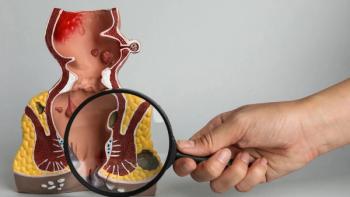
How Do Antibody-Drug Conjugates Work in Lung Cancer?

Dr. Jacob A. Sands shares how antibody-drug conjugates, such as Datroway, work to selectively target and destroy tumor cells among those with lung cancer.
Notably, Datroway
Also at the Dana-Farber Cancer Institute, Sands serves as associate chief of the Lowe Center for Thoracic Oncology and oncology medical director of International Patient Center. He is also an assistant professor at Harvard Medical School.
Transcript
Can you explain how antibody-drug conjugates such as Datroway work to selectively target and destroy tumor cells in lung cancer?
Antibody-drug conjugates are a whole new class of drugs throughout oncology. While they were used in other cancer treatments before, we now have an array of different antibody-drug conjugate treatments for lung cancer. The antibody is something that finds a specific receptor on the tumor cells, in this case, TROP2. So, there's a TROP2 receptor, and Datroway finds the cells and binds to them with the antibody.
That leads to the cell pulling that compound into the cell, which is where the payload, a type of chemotherapy, is released. The payload is held by a linker. So, an antibody-drug conjugate has three components: the antibody, which binds to a certain receptor on the cells; the payload; and a linker, which holds that payload. The linker is very specialized in this case, and I think they've really dialed that to the right point where you want that payload to be released in the tumor cells, not more broadly. What we see from this is that it looks like this payload is successfully being released into and around those tumor cells.
The payload is also something that's able to cross the membranes across the outer layer that's holding the cells together. This means that when it gets delivered to a cell and released in that area, it is able to then go into the other tumor cells around it. This is called a bystander effect.
That's a surface-level explanation of how this drug works and how it's able to specifically target and deliver that treatment to the tumor cells in the tumor environment.
Transcript has been edited for clarity and conciseness.
Reference
- “Datopotamab Deruxtecan in Advanced or Metastatic Non–Small Cell Lung Cancer With Actionable Genomic Alterations: Results From the Phase II TROPION-Lung05 Study,” by Dr. Jacob Sands, et al., Journal of Clinical Oncology.
For more news on cancer updates, research and education,




